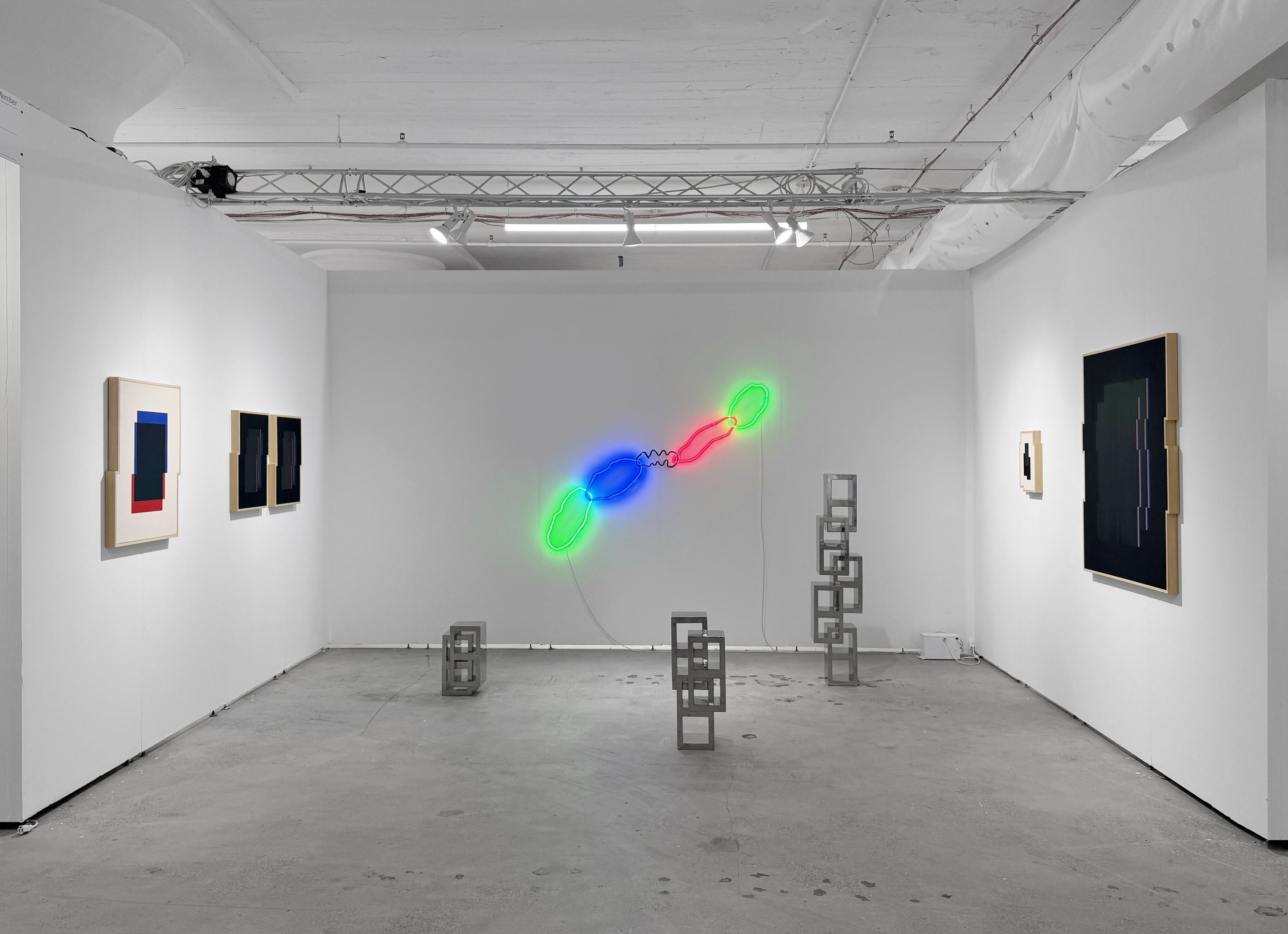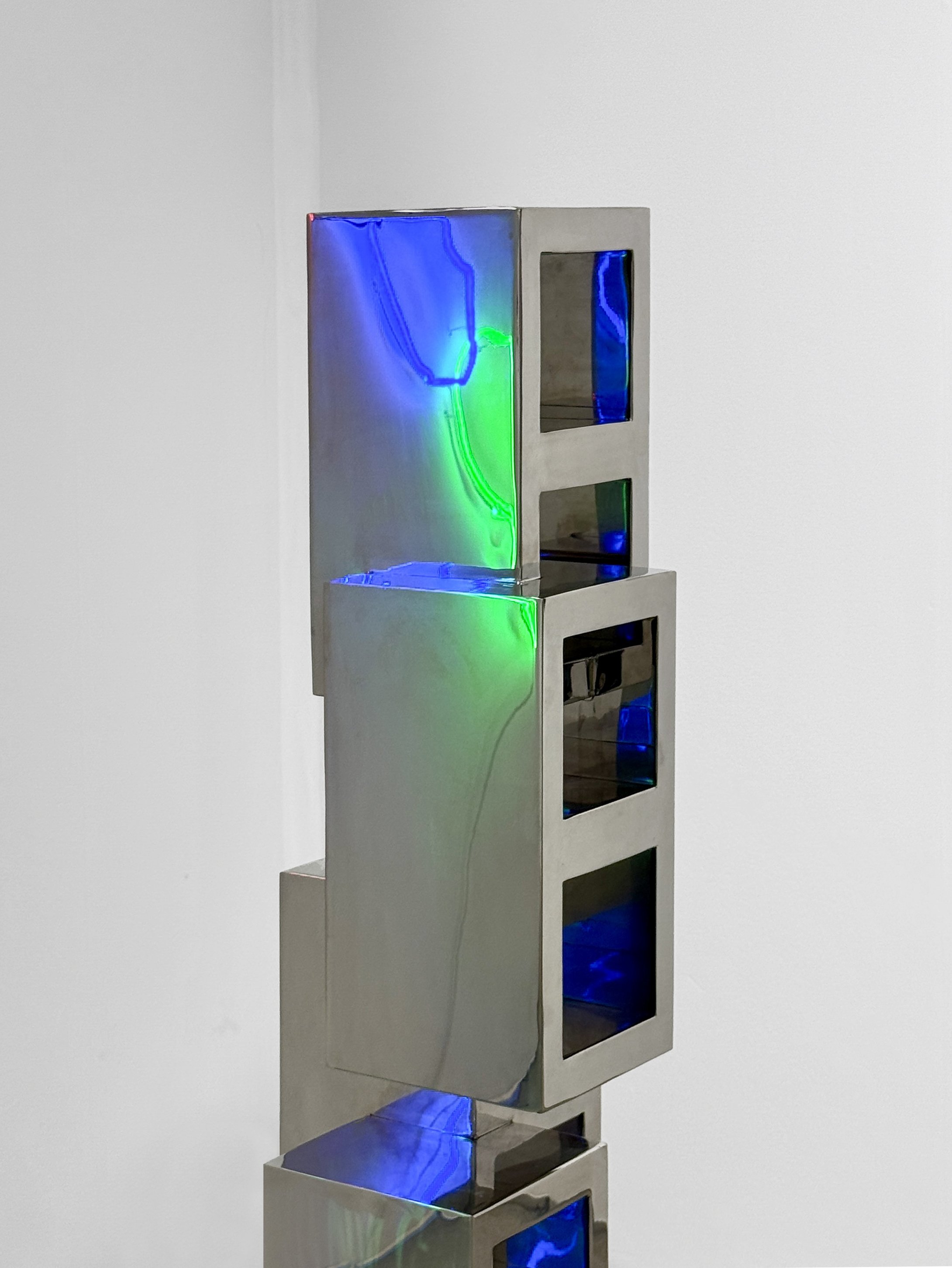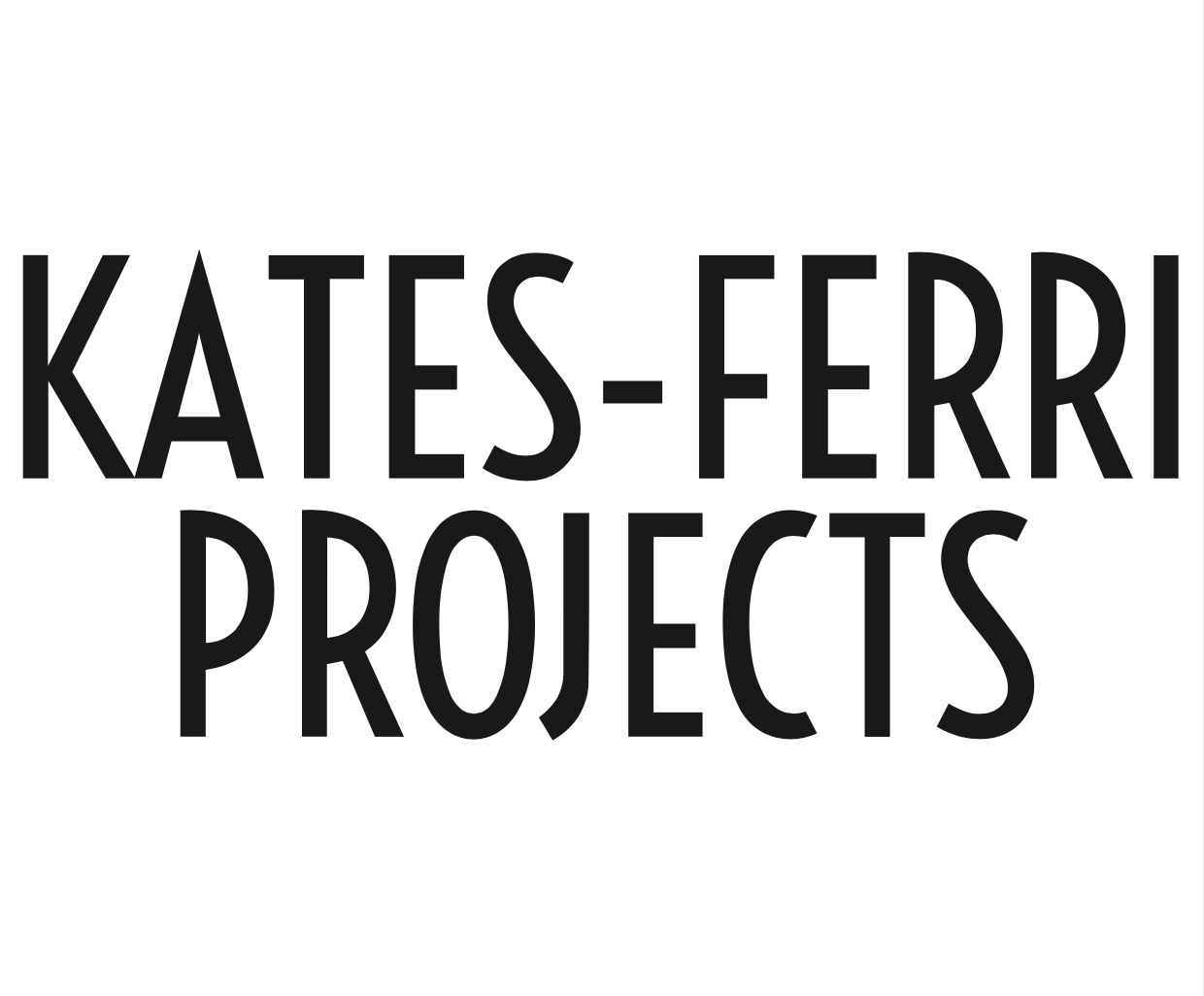Analog: Guillermo Garcia Cruz & Martin Touzon
NADA NY Booth B210 May 7 - 11, 2025







KATES-FERRI PROJECTS is excited to announce its participation at NADA New York with a duo exhibition of Guillermo Garcia Cruz (Uruguay) and Martin Touzon (Argentina), two South American artists whose practices converge to explore light, geometry, and the interplay between technology and human experience. The exhibition, titled ANALOG, will be on view from May 7 to May 11 at the Starrett- Lehigh Building located at 601 West 26th Street, 3rd floor New York, NY 10001 Booth # B210.
The exhibition presents a dynamic conversation between mediums: Garcia Cruz's paintings from his new "Glitch" series that use RGB (Red, Green, Blue) as a modern palette for exploring light and perception; Garcia' Cruz's stainless-steel sculptures from the Pillar series, which capture and refract light; and a neon installation by Touzon that brings literal, glowing light into the gallery space. Together, their works blur the boundaries between representation and reality, evoking the historical tension between painted light and real illumination.
Both artists employ geometric abstraction—a language deeply rooted in South American modernism—to pose global questions about our contemporary experience of the digital age. Cruz’s paintings explore the foundational colors of digital screens, interrogating how light is constructed and perceived in a mediated world. His stainless-steel stack of cement blocks furthers this exploration by embodying light’s materiality and the construction of reality, reflecting its ephemeral nature while grounding it in industrial solidity. Touzon’s neon installation complements and contrasts with Cruz’s work, turning geometry into pulsating light that is at once sculptural and transient. These elements collectively ask how technology shapes our understanding of humanity and nature and where the line between virtual and real experience blurs.
This exhibition of a Uruguayan and an Argentinian artist parallels the origins of the MADI movement, founded by South American artists in the 1940s. Uruguayan Carmelo Arden Quin challenged the traditional rectangular frame in painting, while Argentinian Gyula Kosice embraced neon to model light as a sculptural medium. Similarly, Cruz and Touzon, though working decades later, extend this legacy of innovation: Cruz’s RGB paintings reimagine traditional forms, and Touzon’s neon reaffirms the radical possibilities of light as an artistic medium. Analog bridge’s regional identity and global inquiry, offering a compelling reflection on the technological and sensory landscapes of the modern age.
Guillermo Garcia Cruz: (1988, Montevideo, Uruguay). Professor of Visual Arts by IPA, Montevideo, Uruguay. He has been part of Washington Studio School and Corcoran School of the Arts and Design, Washington, USA. His work has been presented at group and solo exhibitions in Montevideo, Sao Paulo, Lima, Buenos Aires, Mexico, Miami, Washington DC, New York, Madrid, Barcelona, Timisioara, Lisbon and Tianjin. Among other articles and mentions, in 2019 he has been highlighted globally among the 12 artists in the focus of the next generation, by the Ibero-American site Arte Informado. He currently lives and works in the city of
Dubai, UAE, developing an interdisciplinary body of work, made of painting, photography, action and installation, exploring a contemporary approach to the geometric question and the different conceptual interpretations that stem from its formal disruption.
Artist Statement: My work is composed by a series of paintings and sculptures that play with the formal legacy left by Latin American concretism, through Lygia Clark and her paintings from the Planos em Superfície Modulada series, as well as through the production of the movement Uruguayan-Argentine MADI from the 1940s. According to the MADI artists, painting should not be conditioned by the rectangular canvas. On the contrary, the shape of the canvas should follow the structure of the painting.
In my work I offer a formal rapprochement with the constructivist heritage, whilst proposing an attempted rupture that occurs in the very structure of the work. This collapse that occurs within the object is most evident in my glitched works – the paintings and sculptures are always on the verge of separating, multiplying elsewhere, seeking a life of their own by fragmenting their body-structure into contextual space. Historically, we can relate this act of rupture with a reflection on the project of modernity and its collapse in Latin American contexts, as well as on our current moment of global changes where we feel disoriented and anxious about what is about to happen.
I attempt to disorient the viewer’s perception in relation to the plane of the work and produce an effect of noise, like a temporary error or a “glitch” – a term common in the computer context. Repetition, movement, transformation, the limits between interior and exterior are some of the visible concerns in my production, in addition to the pictorial work itself, which may contain apparently opposite elements on its surface such as brightness and opacity, texture and flatness and that are not antagonistic, but rather share the same terrain and interest.
Collections: Cisneros Fontanalls, Cruz Diez Family Collection, Hearst Collection, D+C Collection, Northwestern University Collection, Luis Bassat Collection, Jorge M. Peŕ ez Collection, George and Linda Kelly Collection, Alberto Rebasa Collection, DiGood Collection, Carlos Manzano Collection, La Escalera Collection, Recoleto Colllection, David Segarra collection, Prince Dushan of Serbia collection, Cerro Gallinero Centro de Arte y Naturaleza (Land Art Museum)
Martín Touzón (1985, Argentina) Born just after the fall of the Argentine dictatorship, he grew up in a fragile new democracy plagued by economic crisis and hyperinflation. His personal motivations led him to study economics and then to take part in the UTDT Artists Program. His education is not just focused on a formal institutional level, it was also nourished by working with other artists in their projects and exhibitions.
Since then, his work has addressed the crossroads between art and economics through processes that involve media such as sculpture, installation, performance, and painting to question aspects of today's society.
Touzoń has exhibited individually and in group shows, also made large scale sculptures and performances as public space interventions. In addition, he participated in residencies at The Banff Center (CA) and in Torino (IT) as a prize winner for the Premio Italia - Argentina per l'Arte. Among others, he is a recipient of the Creation Grant by the Metropolitan Fund for Culture, Arts and Science, the Patronage of the City of Buenos Aires and the Bicentennial Grant of the National Endowment for the Arts. His work is in the public collection of La Rural (AR) and in other international private collections.
Artist Statement: Touzoń uses various medias and materials that allows him to explore the aesthetic and political dimension of the economy and consumption, as well as the social component of visibility. So far, his artistic practice has been wide- ranging and polysemous while metaphorically catalyzing socioeconomic concerns. By bringing to light certain paradoxes that may occur simultaneously outside and inside the art system, he saw a way to contribute to the medium that he is working with. And, somehow, it led his practice to be inspired by its context. Many of his works come from the Argentine contextual economic background between accumulation, circulation and loss, his works have a poetic-aesthetic component that highlights and characterizes them.
